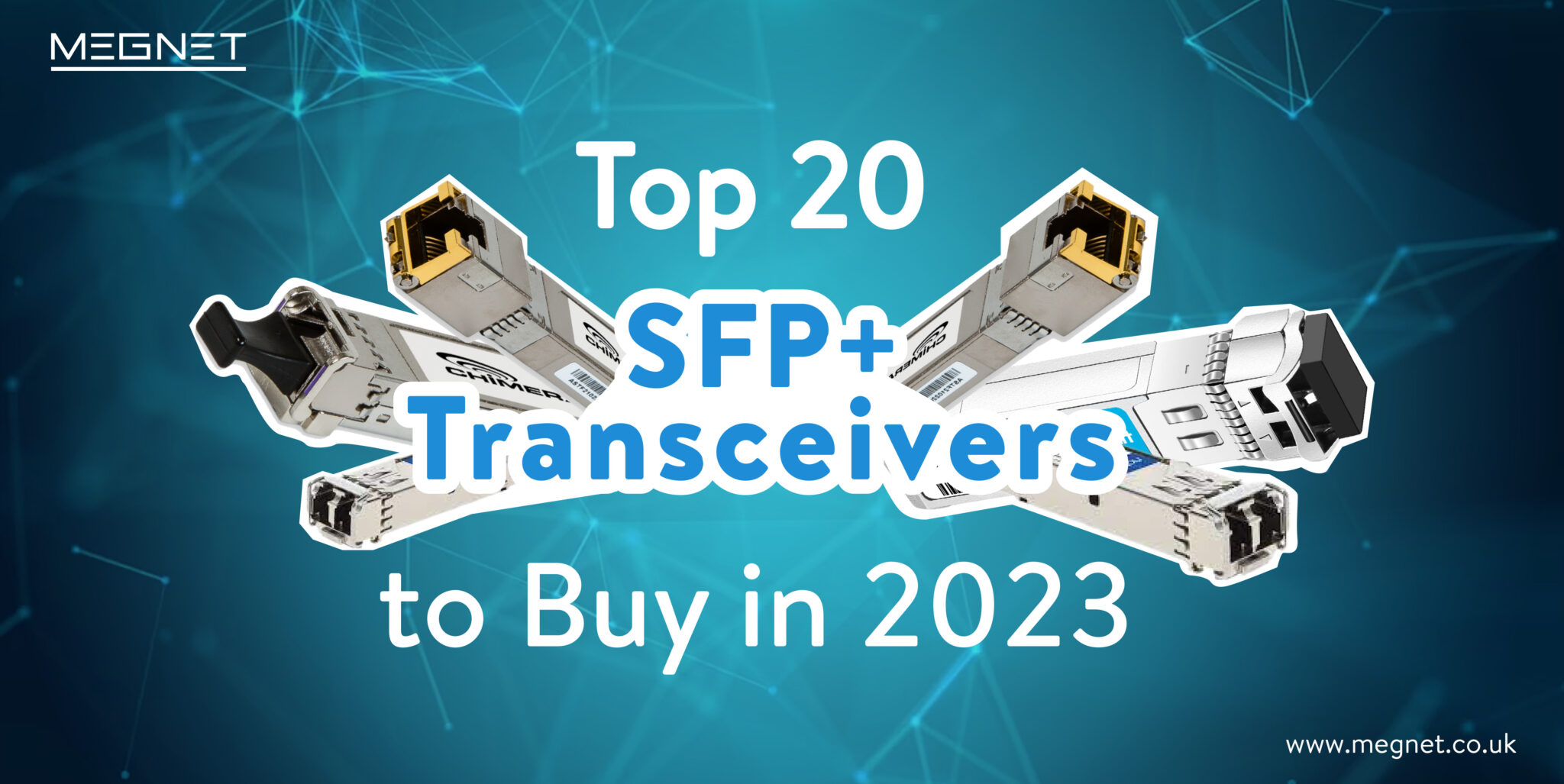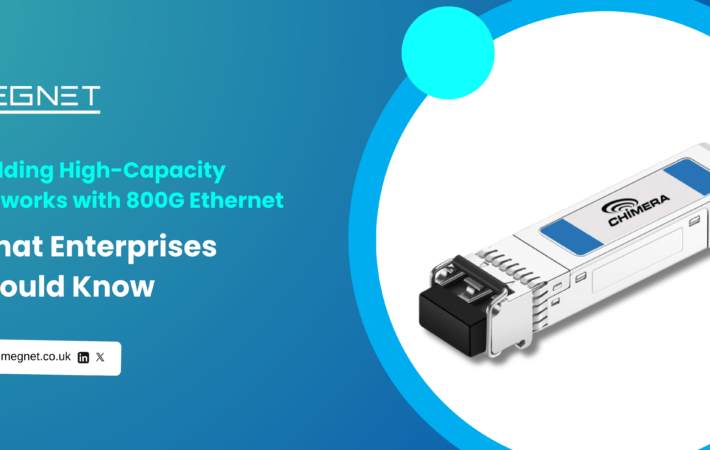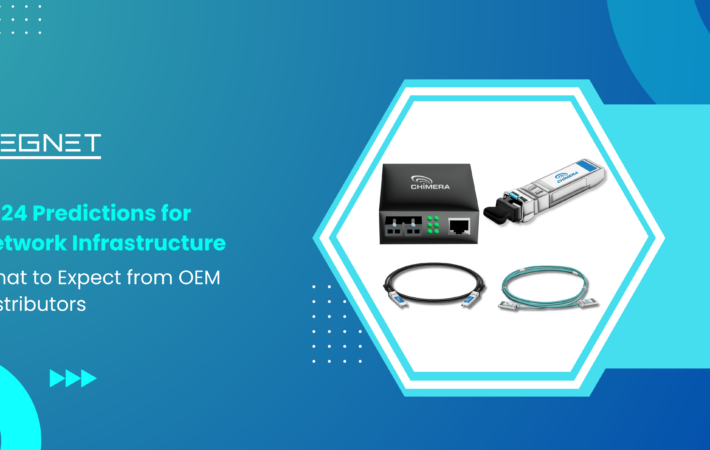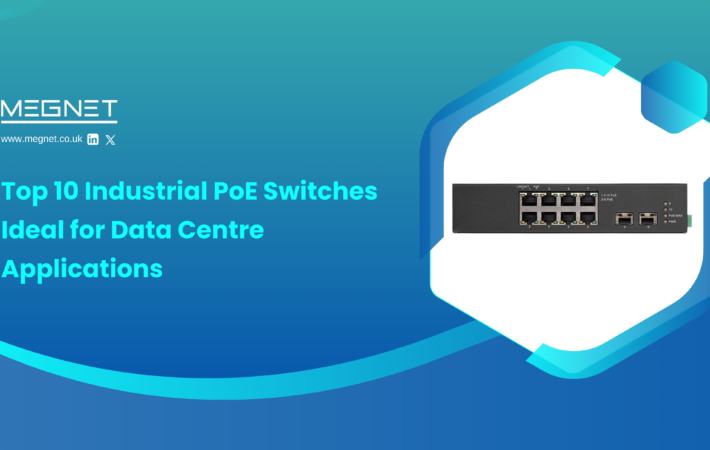Understanding SFP+ Transceivers:
What are SFP+ Transceivers?
SFP+ (Small Form-Factor Pluggable Plus) transceivers are compact, hot-pluggable devices used in networking and data communication to transmit and receive data over optical or copper connections. They are an upgraded version of the original SFP transceivers and are widely used for 10 Gigabit Ethernet (GbE) and higher-speed connections.
Types of SFP+ Transceivers:
- SR (Short Range): These transceivers are optimized for short-distance connections using multimode fibre optics, typically up to 300 meters.
- LR (Long Range): LR transceivers are designed for longer distances, often using single-mode fibre optics, reaching up to 10 kilometers or more.
- ER (Extended Range): ER transceivers provide even longer-range capabilities, often up to 40 kilometers or more.
- ZR (Zero Dispersion): ZR transceivers are used for extremely long-distance connections, with ranges that can extend beyond 80 kilometers.
- DAC (Direct Attach Copper): DAC cables feature SFP+ connectors on each end and are used for short-range connections within racks or data centers.
- AOC (Active Optical Cables): AOCs also offer short-range connections but use optical fibres for higher flexibility and reduced electromagnetic interference.
Benefits of SFP+ Transceivers:
- High Data Rates: SFP+ transceivers support data rates of 10 Gbps and beyond, making them suitable for bandwidth-intensive applications.
- Modularity: They can be easily swapped or upgraded, enabling network administrators to adapt to changing network requirements.
- Compatibility: SFP+ transceivers are designed to comply with industry standards, ensuring interoperability across different vendors’ networking equipment.
- Hot-Pluggable: These transceivers can be inserted or removed from a live network without disrupting overall network operation.
- Flexibility: With various types available, SFP+ transceivers can accommodate different distance requirements and fibre types.
- Cost-Effectiveness: SFP+ transceivers provide a cost-effective solution for high-speed networking, compared to more complex and expensive alternatives.
Considerations when Buying SFP+ Transceivers:
- Compatibility: Ensure buying compatible transceivers with your networking equipment, including switches, routers, and servers.
- Distance Requirements: Choose the appropriate type (SR, LR, ER, etc.) based on the distance you need to cover.
- Fibre Type: Verify if the transceiver is compatible with the type of fibre optic cable you have (multimode or single-mode).
- Data Rate: Confirm that the transceiver supports the required data rate for your network.
- Brand and Quality: Consider reputable brands known for reliability and performance.
- Budget: Evaluate cost-effectiveness while balancing your networking requirements.
- Warranty and Support: Check for warranty and support options provided by the manufacturer or vendor.
In the rapidly evolving landscape of networking and data communication, SFP+ transceivers play a crucial role in ensuring high-speed and reliable data transmission across various industries. As we are in 2023, the demand for efficient and high-performance OEM-compatible networking products continues to grow.
This blog aims to provide you with insights into the top 20 SFP+ transceivers available in 2023, helping you make informed decisions for your networking needs.
- Cisco SFP-10G-SR-S: Renowned for its quality and compatibility, this transceiver offers a short-range connection with a data rate of 10 Gbps over multimode fibre.
- Alcatel-Lucent SFP-10G-SR: Short-range (SR) up to 300 meters on multimode fibre this transceiver ensures seamless integration for 10 Gbps short-range connections.
- Juniper Networks EX-SFP-10GE-SR: Designed for Juniper Networks equipment, this transceiver offers 10 Gbps speeds over short distances and ensures seamless integration.
- Mellanox MFM1T02A-SR: Ideal for high-performance computing environments, this transceiver offers 10 Gbps speeds for up to 300 meters over multimode fibre.
- HPE JD092B: Hewlett Packard Enterprise’s offering delivers 10 Gbps speeds for short-range connections and guarantees compatibility with HPE networking products.
- Brocade 10G-SFPP-SR: This transceiver provides 10 Gbps connectivity over short distances and is suitable for use with Brocade networking solutions.
- Dell 407-BBOU: Dell’s SFP+ transceiver offers 10 Gbps speeds for short-range connections and is designed to work seamlessly with Dell networking equipment.
- Netgear AXM761: With compatibility across multiple brands, this 10 Gbps transceiver is a versatile choice for various networking setups.
- Intel E10GSFPSR: Intel’s transceiver ensures 10 Gbps data rates for short distances and is designed to meet the demands of high-performance networking.
- TP-Link TL-SM311LS:A budget-friendly option, this transceiver offers 10 Gbps speeds for short-range connections, making it suitable for small to medium-sized setups.
- Arista Networks SFP-10G-SR: Arista’s transceiver supports 10 Gbps speeds over short distances and is tailored for use with Arista networking solutions.
- Ubiquiti UF-MM-10G: Designed for Ubiquiti products, this transceiver offers 10 Gbps speeds and is a reliable choice for seamless integration.
- Extreme Networks 10301: Extreme Networks’ transceiver ensures 10 Gbps speeds for short-range connections and is optimized for use with Extreme Networks equipment.
- Zyxel SFP10GSR: With 10 Gbps speeds and broad compatibility, this transceiver suits various networking environments and setups.
- D-Link DEM-431XT: D-Link’s offering provides 10 Gbps connectivity over short distances, catering to the needs of small to medium-sized businesses.
- QLogic QLE3242-SR: Built for high-performance data centers, this transceiver offers 10 Gbps speeds for reliable short-range connections.
- Allied Telesis AT-SP10SR: Allied Telesis’ transceiver delivers 10 Gbps speeds and is designed to seamlessly integrate with their networking solutions.
- Mellanox MC3309130-001: For demanding data center environments, this transceiver offers 10 Gbps speeds and ensures low latency and high reliability
- MikroTik SFP-10G-SR: MikroTik offers a versatile transceiver with 10 Gbps speeds for short-range connections, making it suitable for various networking scenarios. This transceiver ensures reliable performance and compatibility with MikroTik networking solutions.
- Huawei 0231A0A6: Huawei’s transceiver provides 10 Gbps speeds and guarantees compatibility with their networking equipment, ensuring optimal performance.
Conclusion:
As the demand for high-speed and reliable networking continues to grow, selecting the right SFP+ transceiver is paramount. This list of the top 20 SFP+ transceivers in 2023 provides a comprehensive overview of the options available, ensuring that you can make informed decisions based on your specific networking needs. Whether it’s for short-range connections, high-performance data centers, or seamless integration with specific brands, these transceivers offer a range of choices to meet your requirements.
FAQ's
SFP+ transceivers come in various types, including SR (Short-Range), LR (Long-Range), ER (Extended-Range), and DAC (Direct Attach Copper) for short distances.
SFP+ offers higher data rates and is backward compatible with SFP ports, but it has a smaller form factor. SFP+ supports data rates up to 10 Gbps and beyond.
SFP+ transceivers can support data rates ranging from 1 Gbps to 25 Gbps, depending on the specific model.
Yes, SFP+ transceivers SFP transceivers can often be used in SFP+ ports, but their data rates will be limited to the capabilities of the SFP transceiver.
Yes, SFP+ transceivers are designed to be hot-swappable, allowing them to be inserted or removed from a running device without powering it down
Consider factors like data rate, transmission distance, fibre type (single-mode or multi-mode), and compatibility with your networking equipment.
Yes, there are SFP+ transceivers available for both single-mode and multi-mode fibre, so make sure to choose the appropriate type for your network infrastructure.
Some networking equipment vendors lock their devices to work only with their branded transceivers. Third-party transceivers may work, but compatibility should be verified.
DAC (Direct Attach Copper) cables are cost-effective and are used for short-distance connections within racks or data centers, offering lower latency compared to optical connections.
Mixing different brands of SFP+ transceivers can work, but it's important to test and verify compatibility before deployment to ensure optimal performance.
Use quality cables, ensure proper insertion, and keep the transceivers clean and free from dust. Regular maintenance and monitoring are also recommended.
While SFP+ technology has been widely used for 10 Gbps and 25 Gbps applications, newer technologies like QSFP (Quad Small Form-Factor Pluggable) and OSFP (Octal Small Form-factor Pluggable) are becoming more prevalent for even higher data rates.










Leave a comment
Your email address will not be published. Required fields are marked *